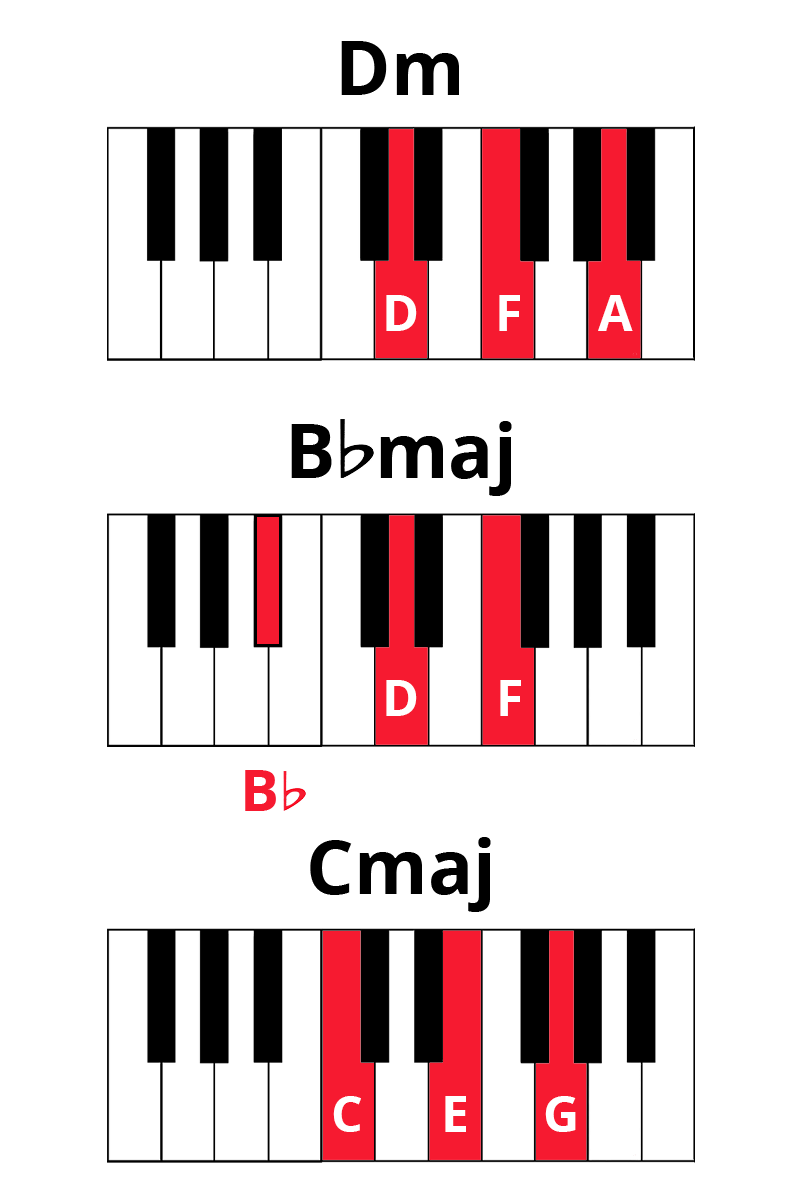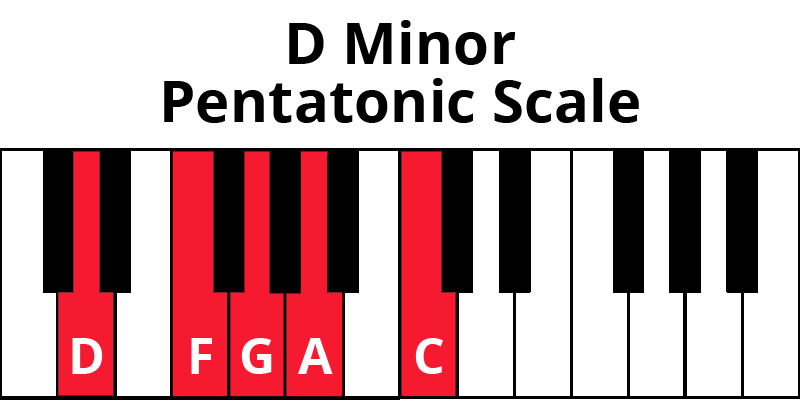Beginners can sound beautiful on the piano. Using just a few ingredients, I’ll teach you how to improvise a heavenly melody in this simple improv exercise.
Watch the video if you want to start playing, or keep reading if you want to understand the theory behind this exercise.
Subscribe to The Note for exclusive interviews, fascinating articles, and inspiring lessons delivered straight to your inbox. Unsubscribe at any time.
Chords are the foundation to music. Think of chords as the scaffolding that holds up a song.
In this exercise, our scaffolding will be the chords Dm – Cmaj – Bbmaj.
This is how these chords look like on the keyboard. If you’re a beginner and are still learning to get comfortable with chords, you can play shell chords first: D-A, C-G, and B♭-F.

We’re in D Minor, and these are the chords built on the first, seventh, and sixth notes of the scale. Together, they build a i – VII – VI progression.
For more info on these topics, check out these lessons:
A pentatonic scale is a five-note scale. This type of scale is popular in music around the world, especially Eastern music. You can also find the pentatonic scale in modern jazz, blues, and rock music.
The D Minor pentatonic scale we’ll be working with includes these notes:

Now, try playing this scale on top of each chord: Dm – Bbmaj – Cmaj.
Play it up, play it down. Get it comfortable under your fingers.
Then, pick a few notes out of the scale and play around with them. For example, try rocking between F and C, D and A, and G and C.
You can also try three-note patterns like F-G-C and A-G-D.
And playing all the notes at once sounds surprisingly good too.
Once you feel comfortable with the basic notes and chords, explore further. Just some ideas:
Let us know what you come up with in the YouTube comment section. Or share your music with us on Instagram (@pianoteofficial).
As a Pianote Member, you’ll get access to our 10-step Method, song library, and growing community of piano players just like you. Plus: get coached by world-class pianists and learn whenever you want, wherever you want, and whatever you want.
TRY PIANOTE FOR 7 DAYSLisa Witt has been teaching piano for more than 20 years and in that time has helped hundreds of students learn to play the songs they love. Lisa received classical piano training through the Royal Conservatory of Music, but she has since embraced popular music and playing by ear in order to accompany herself and others. Learn more about Lisa.
/marketing/pianote/promos/april/banner-bg-m.webp)
We use cookies for traffic data and advertising. Cookie Policy »
/marketing/pianote/promos/april/banner-title.webp)